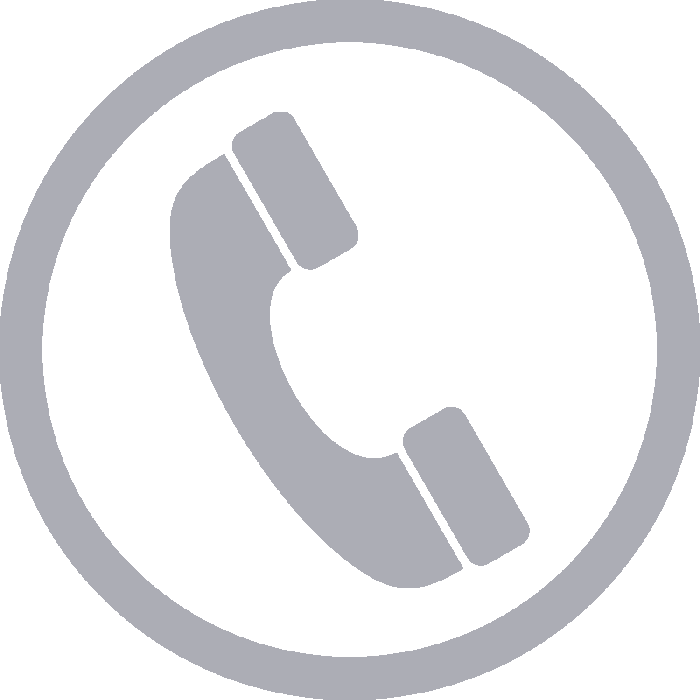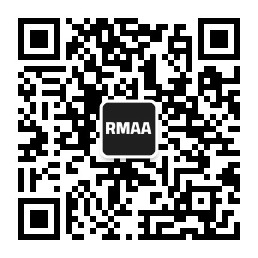Blog about successful marketing strategies in russia
Radio and Podcast Advertising Opportunities in Kyrgyzstan


DIGITAL MARKETING
Share this Post
Around 34% of the population in Kyrgyzstan listens to the radio at least once a week, most often while commuting or at home. This is especially true for audiences over the age of 35 and for residents of the southern regions. In Bishkek, the stations with the widest reach are Europa Plus Kyrgyzstan (≈14.7%), Kyrgyzstan Obondoru (≈12%), and Avtoradio (≈10%).
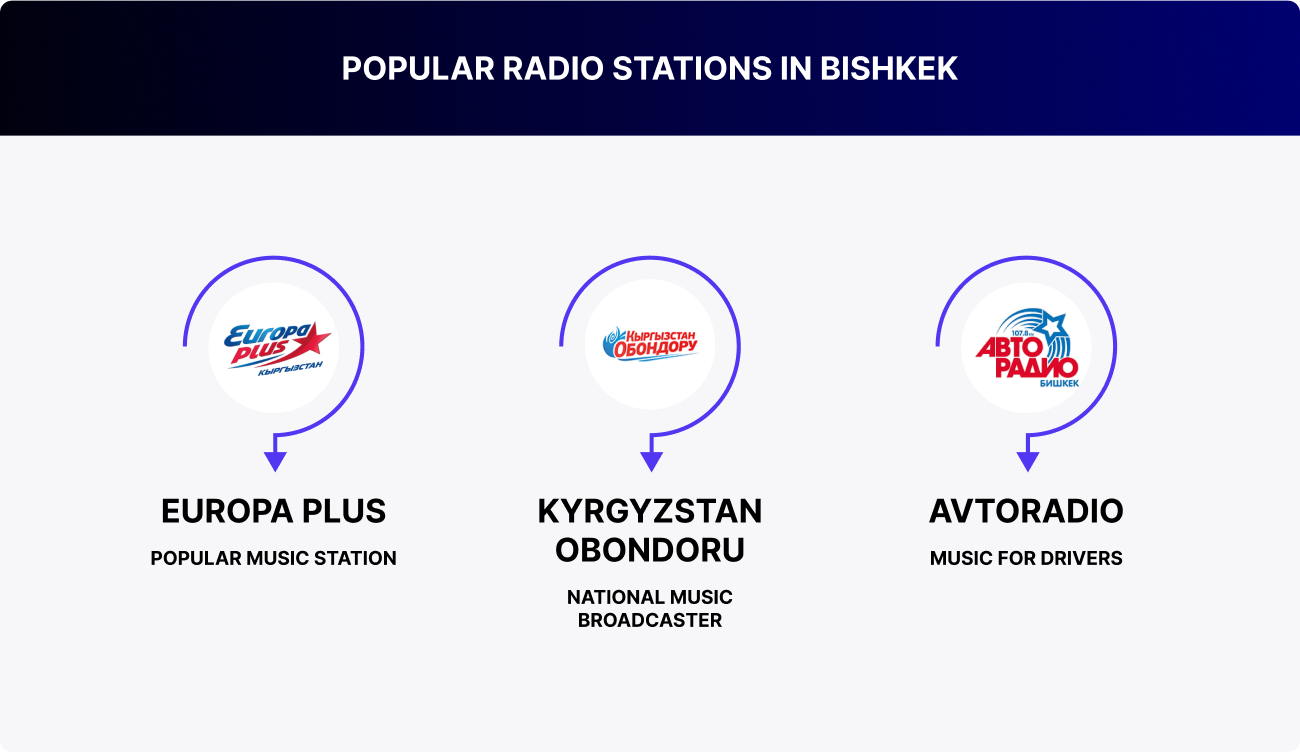
Podcasts are a format with a smaller reach but a highly engaged audience. They are mainly consumed by young people aged 20–35, primarily through YouTube or Telegram. Although podcasts haven’t become a mass channel yet, their extended duration and the audience’s strong focus make them effective, especially when both reach and the quality of connection matter.
These audio formats often go unnoticed by advertisers. However, they perform well in situations where it’s important not just to catch attention, but to build trust and create a sense of presence — whether in the car, in the kitchen, or during everyday routines.
They are particularly valuable in sectors where decisions aren’t made impulsively but after careful consideration; for example, in pharma, where reliability is essential; in finance, where consistent reminders make a difference; in the auto industry, because people tend to listen more than watch while driving; and in offline services, where interactions happen naturally within the everyday routine.
Audience: Who Listens and Where
The radio audience in Kyrgyzstan primarily consists of men aged 25 to 54, most often with higher education and income levels corresponding to social classes B and C. The vast majority are of Kyrgyz ethnicity. The main reach comes from listeners aged 25 to 44, while the most consistent and loyal audience is between 45 and 64 years old. Overall, about 60% of listeners are male.
People tune in to the radio for practical reasons. Most commonly, it’s for the music, which 45.1% of listeners choose. This is followed by news (25.2%), favorite shows (9%), background sound (8.5%), and contests or giveaways (2.9%). Analytical content is hardly in demand — only 1.5% of the audience listens to it regularly. Radio remains less a place for deep meanings and more a familiar sound environment — tailored to mood, the commute, or the day’s rhythm.
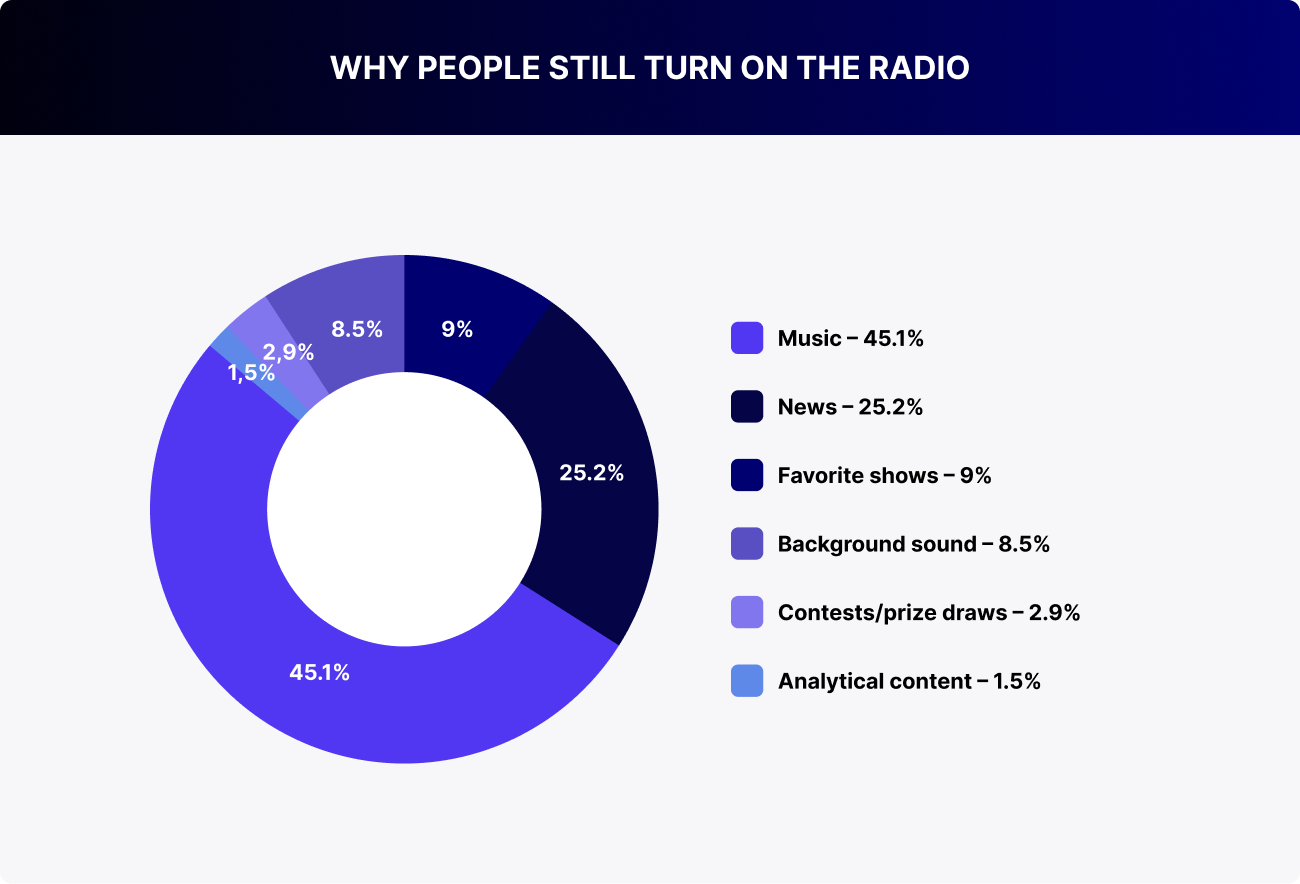
The majority of listening — about 89% — happens outside the home. The main device remains the car stereo, through which 44.5% of people tune in. Smartphones are used by only 8.3%, while other devices (computers, TVs, portable receivers) play a minimal role in consumption.
The highest activity is during morning and daytime hours: from 7:30 to 9:30 and from 13:00 to 17:30. On weekends, radio listening goes up by at least 23% compared to weekdays, depending on the time of day.
There are also regional differences. In Bishkek, radio is especially popular in the morning, at lunch, and in the evening. In Osh and Jalal-Abad, peak listening occurs during the daytime — between 9:30 and 12:00, and again from 14:30 to 18:00.
By volume of listening, Bishkek leads, accounting for around 76% of total traffic. Other regions catch up thanks to more stable loyalty to specific stations and the habit of keeping the radio on as background throughout the day, especially in the southern part of the country.
Selecting Stations Based on Goals
| Radio Station | Format / Content | Broadcast Region | Broadcast Language |
|---|---|---|---|
| Kyrgyzstan Obondoru | Music (Kyrgyz pop, 90% music, 10% news). Entertainment shows | Nationwide (regional retransmission) | Kyrgyz |
| Tumar FM | Kyrgyz pop hits, showbiz news, interactive content | Nationwide (Bishkek, Osh, Jalal-Abad, etc.) | Kyrgyz |
| Мин Кыял FM | Youth music (Kyrgyz pop, folk-pop) | National broadcasting via the KTRK network | Kyrgyz |
| Hit FM Kyrgyzstan | CHR / Top-40, international and Russian hits | Bishkek and major cities (Osh, etc.) | Russian |
| Europa Plus Kyrgyzstan | European pop music, charts, shows | Bishkek, Osh, other cities, online | Russian |
| Retro FM Kyrgyzstan | Retro hits from the 70s–90s, USSR and international pop | Bishkek, Osh, online | Russian |
| Sputnik Kyrgyzstan | News, analytics, talk shows | Bishkek, Chuy region, online | Russian / Kyrgyz |
| Birinchi Radio (KTRK) | Public broadcasting: news, culture, analysis, music | Nationwide (all regional centers) | Kyrgyz / Russian |
| Yntymak Radiosu | News, music, educational formats | Osh, Jalal-Abad, online | Kyrgyz / Uzbek |
| Sanjyra Radiosu | Folklore, epics, ethnic music, cultural programs | Bishkek, Osh, online | Kyrgyz / Russian |
| Kloop Radio (online) | Music, podcasts, social topics, youth agenda | Online (24/7 stream) | Kyrgyz / Russian |
| Radio Azattyk (online) | News, analytics, independent coverage | Online (YouTube, website) | Kyrgyz / Russian |
| Atom FM | Electronic music, hip-hop, urban, no talk | Bishkek + online | Russian |
| Süyünchü FM | Kyrgyz wedding songs, festive content | Bishkek + online apps | Kyrgyz |
If You’re Targeting Youth and Lifestyle — Focus on Music and a Light Tone
- Kyrgyzstan Obondoru (106.5 FM) is the absolute favorite across the regions. It’s heard everywhere, from Batken to Naryn. Music, casual talk, and the Kyrgyz language. Ideal for local FMCG, pharmacy chains, and mobile app advertising.
- Tumar FM (96.1 FM) is slightly younger and more dynamic, popular with urban youth. Current hits, interactive shows. Works great for brands aiming to “catch the wave”: e-commerce, fast food, home appliances.
- Min Kyial FM (103.7 FM) is a dreamy station focused on students and schoolkids. Pop music, folk-pop, and “about life” conversations. Suitable for educational projects, book services, and youth events.
If You Need Urban Reach and Awareness in Bishkek
- Europa Plus Kyrgyzstan (101.7 FM) leads listenership in the capital. Western hits, stylish format, adults aged 18–40. Good for car brands, banks, and everything that should sound premium and clear.
- Hit FM (105.6 FM) is a local version of a popular music network. Listened to in Bishkek and southern cities. Russian language, entertainment format. Perfect for cross-promotion with TikTok campaigns and entertainment marketing.
- Retro FM (104.5 FM) targets the 35+ audience, especially women. Features hits from their youth, programs with nostalgic themes. Works well for pharmacy ads, medical services, and household goods.
If News, Politics, and Serious Tone Matter
- Sputnik Kyrgyzstan (105.0 FM) offers talk shows, analysis, and international affairs. Russian-speaking audience 30+. Suitable for brands that need to sound authoritative: insurance, healthcare, legal, and financial services.
- Birinchi Radio (104.1 FM) is the main channel of KTRK. It has a universal format, from culture to news. High trust, coverage across all of Kyrgyzstan. A platform for government campaigns, image launches, and complex topics.
- Yntymak Radio (106.1 FM) covers the southern part of the country in Kyrgyz and Uzbek. It’s one of the few channels truly serving the Uzbek-speaking audience. Perfect for local programs, banks, logistics, and social initiatives.
For Niche or Targeted Audiences
- Sanzhyra Radiosu caters to the older generation with folklore and epics. Suitable for advertising medicine, farming programs, and traditional products.
- Love Radio, Avtoradio, Gorod FM still hold positions in the city but work better as support within a media mix.
- Atom FM, Suyunchu FM offer unusual formats, from R’n’B to wedding songs. Fit local brands with a bold character.
What About Internet Radio?
Kloop Radio and Azattyk focus more on content and public issues. They have a strong core audience, but commercial advertising is approached cautiously.
Atom FM plays electronic music and streams, making it a good testing ground for youth formats through sponsored airtime.
If a brand doesn’t aim to reach ‘everyone at once’ but understands its audience well, radio in Kyrgyzstan can deliver precise targeting, especially where digital is already saturated and TV feels too heavy.
Who Advertises on the Radio and Why
Radio advertising in Kyrgyzstan is a small but steady market. Its volume is estimated at around $0.65 to $1 million per year, which is about 1 % of the country’s total media budget. Compared to TV and digital, these numbers may seem modest, but radio ads follow their own logic and have established players.
Most often, airtime is bought by local companies who know their audience well. Leading the pack are mobile operators: O! (Nurtelcom), Beeline (Sky Mobile), and MegaCom (Alpha Telecom). They run branding and promo campaigns, especially on stations broadcasting in Kyrgyz and reaching regional audiences.
Retail and FMCG come in second. Active advertisers include Coca-Cola, local beverage and dairy producers, as well as electronics chains like Sulpak and Samsung. For them, radio is a fast way to deliver promotions: a short spot, a clear message — and the customer is on their way to the store.
Healthcare and pharmaceuticals form another significant segment. Clinics, pharmacies, and medication brands advertise here. For example, the Hong Kong Medical Center and GMP. They target times with a high share of older listeners, focusing not on direct calls to action but on calm, regular reminders: “we’re nearby,” “you can trust us,” “we provide care.”
Additionally, ads for cinemas, concerts, restaurants, new housing complexes, clothing stores, and home goods can be heard. Financial services, car dealers, and transport companies appear less frequently but use radio when they need to reach specific listener groups.
The Industry Budget Leaders are:
| Industry | Example Brands | Comment |
|---|---|---|
| Telecom | O!, Beeline, MegaCom | The top sector historically, especially strong in the regions |
| FMCG | Coca-Cola, juices, dairy products | Broad reach, easily memorable |
| Retail & Electronics | Sulpak, Samsung, local stores | Promotions, discounts, seasonal sales |
| Pharma & Healthcare | Hong Kong Medical Center, GMP | Stable segment, relies on consumer trust |
| Entertainment | Movies, concerts, cafes | Most often — local announcements |
| Construction | Residential complexes, construction firms | Significant budgets in Bishkek and Osh |
Airtime is bought from those who provide stable reach, either nationwide or in key cities. Europa Plus Kyrgyzstan captures the largest share of advertising budgets, accounting for about 25% of all placements. Slightly less goes to Kyrgyzstan Obondoru, with around 20%. Other leaders include Retro FM, Hit FM, Avtoradio, Tumar, and Min Kyial FM. Their airtime is especially in demand during music slots and morning shows.
The winners are the stations with a well-structured schedule and a clear audience profile. This gives advertisers predictability: they know who will hear the message and when. It’s this confidence in effectiveness that makes commercial stations attractive for regular campaigns.
Radio remains a seasonal channel. The highest activity happens in spring — a time of renewed energy, the start of the gardening season, and growing consumer interest. Autumn marks the beginning of a new business cycle, bringing a wave of launches and offers. In December, the airwaves fill with holiday promotions, greetings, and gift campaigns. The quietest period is July: the audience is scattered, many are on vacation, and businesses reduce their activity.
Radio won’t deliver millions of listeners in a day. But if a brand works in regional markets, wants to go beyond digital, and communicate with its audience simply, regularly, and meaningfully, this channel can deliver results. Especially when speaking to people in a language close to them.
Podcasts in Kyrgyzstan: What’s Available on the Market?
The podcast market in Kyrgyzstan is still far from saturated — and that’s exactly its advantage. Unlike Moscow or Almaty, there’s still room to become the first in your topic, carve out a niche, and build a loyal audience.
Podcasts are mainly listened to in Kyrgyz and Russian. Topics are close to everyday life: from social and gender issues (for example, Jibek Jolu Podcast) to health and mental well-being (Tynychtyk Podcasts). Episodes about education, business, and technology (Bilim Aktsent, Kloop Media) are popular, as well as personal stories and lifestyle projects like ‘Speak Louder’ and ‘Askar and Friends’.
The most popular platforms are YouTube and Telegram. Less frequently used are SoundCloud, Spotify, local websites, or RSS feeds. Podcasts are usually discovered through recommendations or Instagram, where sharing clips and building a community around an episode is easy.
For brands, this channel offers clear advantages. The audience is niche, so podcasts don’t scatter attention but reach precisely. The host’s voice feels like a personal conversation rather than advertising. And if a listener starts an episode, there’s a high chance they’ll finish it — episodes often last between 20 and 60 minutes. Entry into this format is among the most accessible: you can start with a small partnership or integration and test the idea without major expenses.
The Most Popular Podcasts in Kyrgyzstan
-
Sheikh Chubak Aji Jalilov
The top Kyrgyz-language podcast by listenership isn’t a startup or motivational show, but an audio legacy. These are recordings of Islamic sermons by Sheikh Chubak Jalilov, a figure who influenced an entire generation. His words are heard on the road, at home, and before sleep. Some episodes reach half a million views on YouTube. The format is archival, but its impact continues.
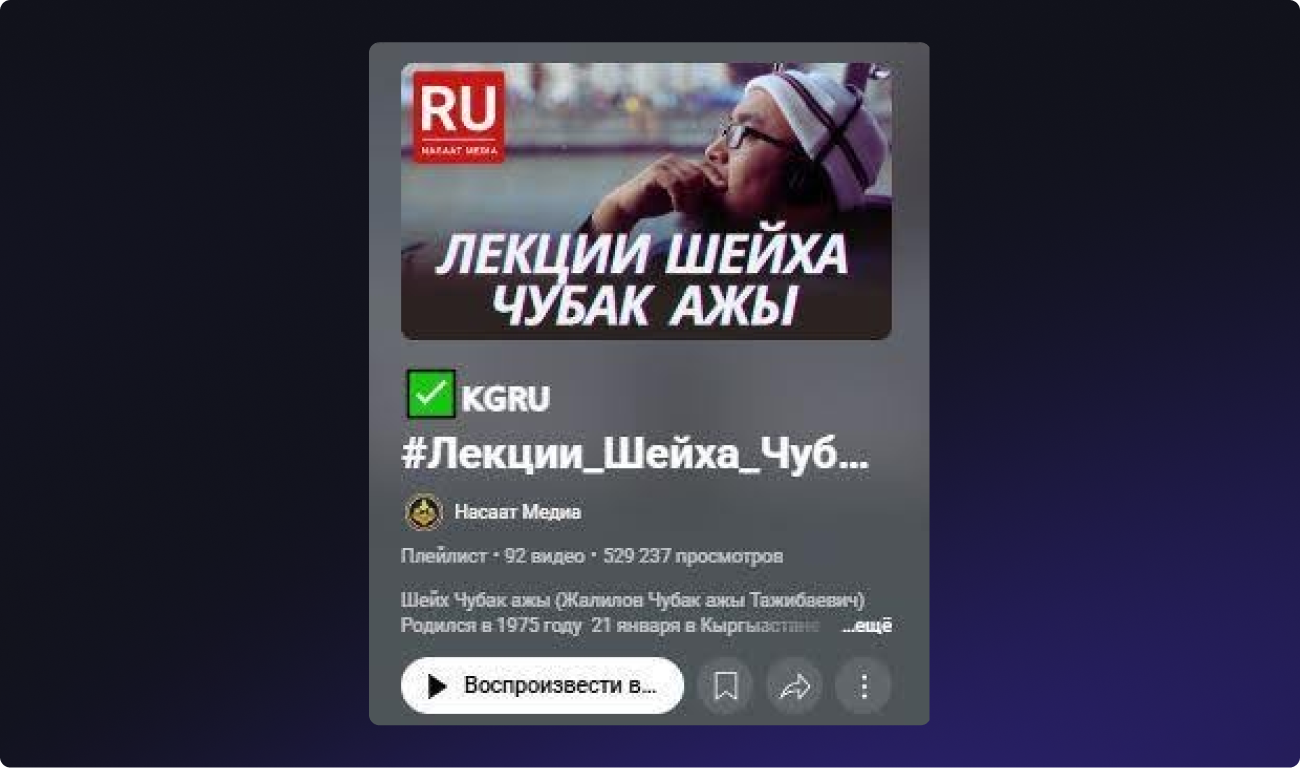
-
Jaratman Podcast
If there is a true podcast brand in the country, it’s this one. Urmat Nasykulov invites Kyrgyz people who didn’t complain but took action: business founders, mountaineers, and philanthropists. This isn’t an interview for likes, but an inspiring story about people changing the country. Episodes gather tens and hundreds of thousands of views. -
Lights Podcast
A Russian-language podcast with an international focus. Guests are Kyrgyzstanis around the world, from Chicago to Seoul. They talk about building careers, escaping poverty, and returning to Bishkek as experts. The format is pure motivational storytelling. The audience includes youth, freelancers, and those searching for their path. -
Perekrestok’ (Azattyk)
For a political and social snapshot, this is the go-to. Azattyk Radio podcast is a weekly roundtable on events in Kyrgyzstan: migration, rights, economy, media. Guests range from journalists to officials. It is listened to by those who care about context.
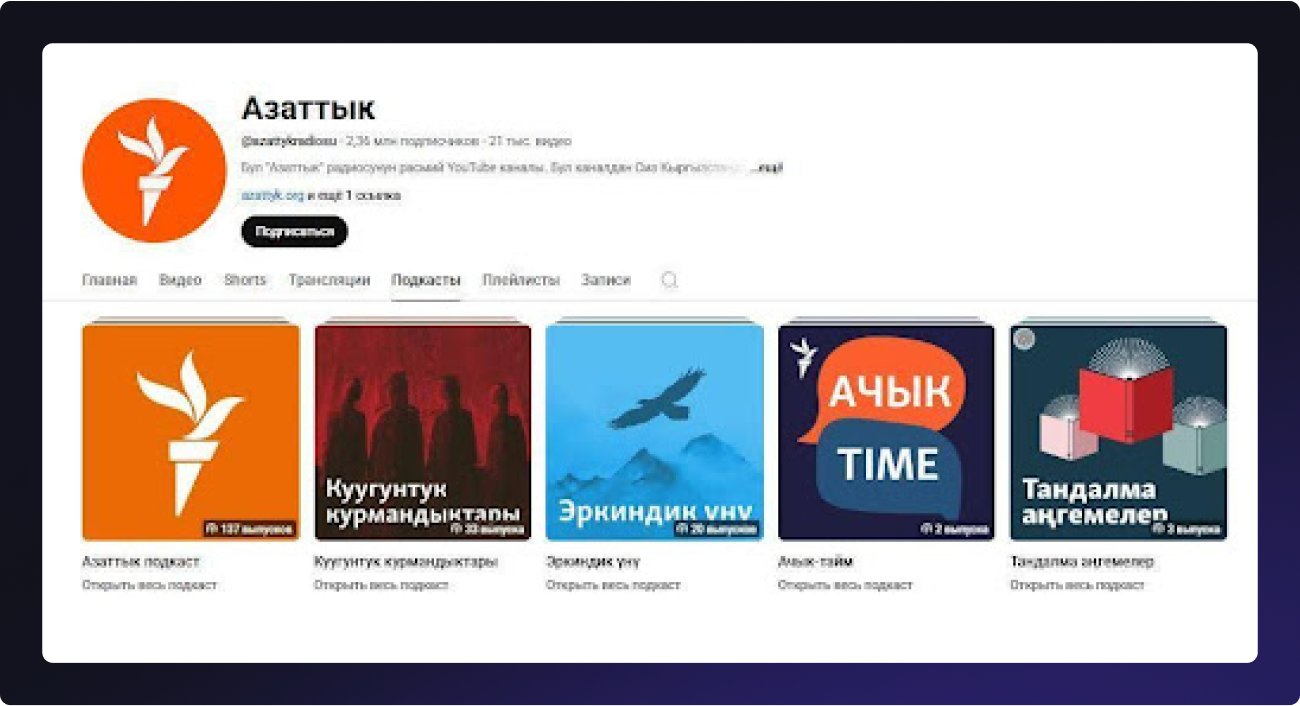
-
Menya ne otpuskayet (I Can’t Let Go) (Kloop)
Personal and international. Guests are foreigners who came to Kyrgyzstan ‘just for a bit’ but stayed. The format is confessions. Why? Because they ‘can’t let go.’ This gives an unexpected view of the country through the eyes of those who found something alive in it.
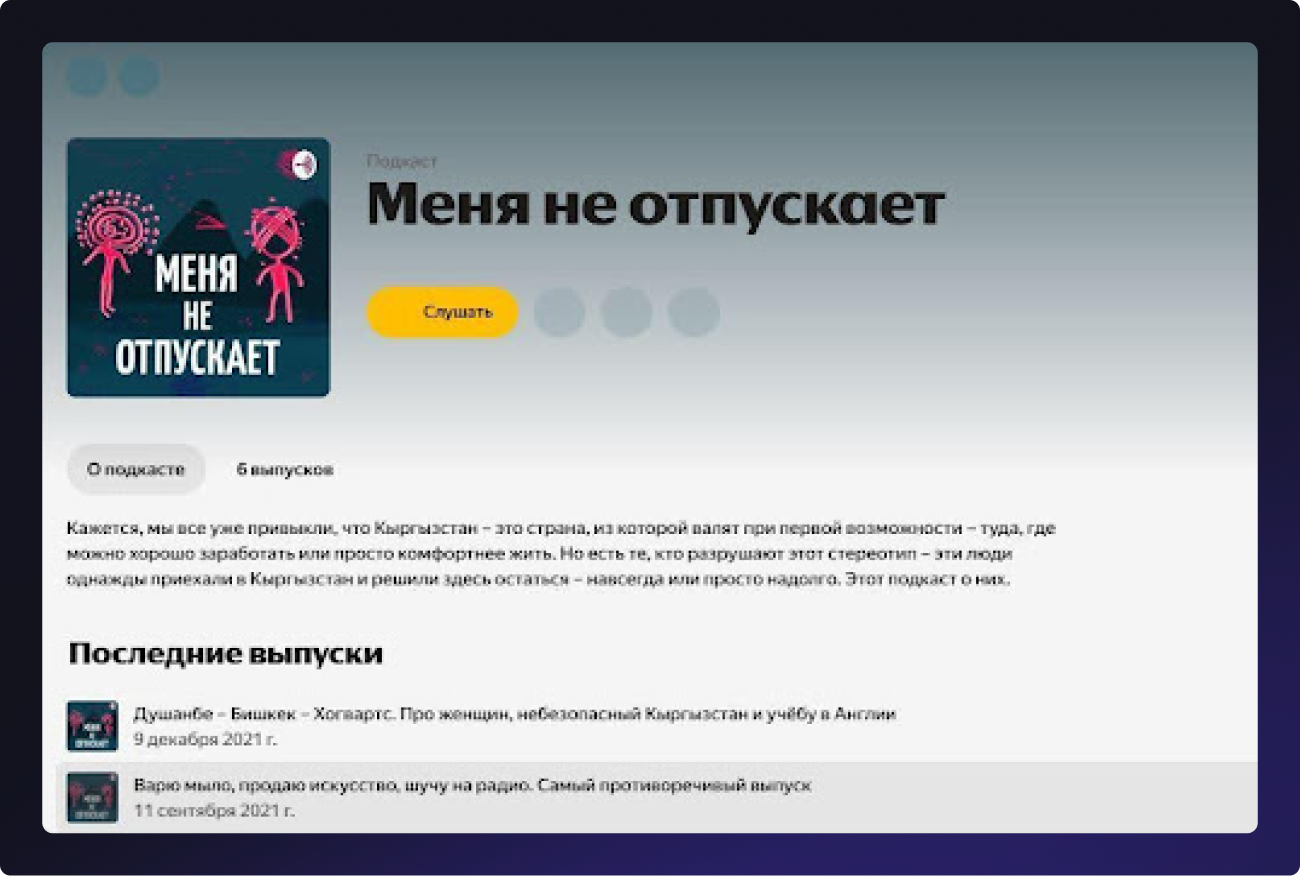
-
Muras
‘Heritage’— that’s the meaning of the podcast’s name. History, philosophy, culture, deep conversations about what remains when the noise fades. Guests range from designers to politicians, musicians to linguists. The format is calm, long talks in Kyrgyz and Russian. The podcast has its own, albeit niche, intellectual audience. -
#MediaKyzdar
A podcast about women in media сreated by Tynymgul Eshieva, with no glossiness here. It features talks with female reporters, editors, activists, and those shaping journalism in Kyrgyzstan. The format is interviews covering the profession’s story, personal journeys, challenges, and freedom of speech. A niche but powerful project.
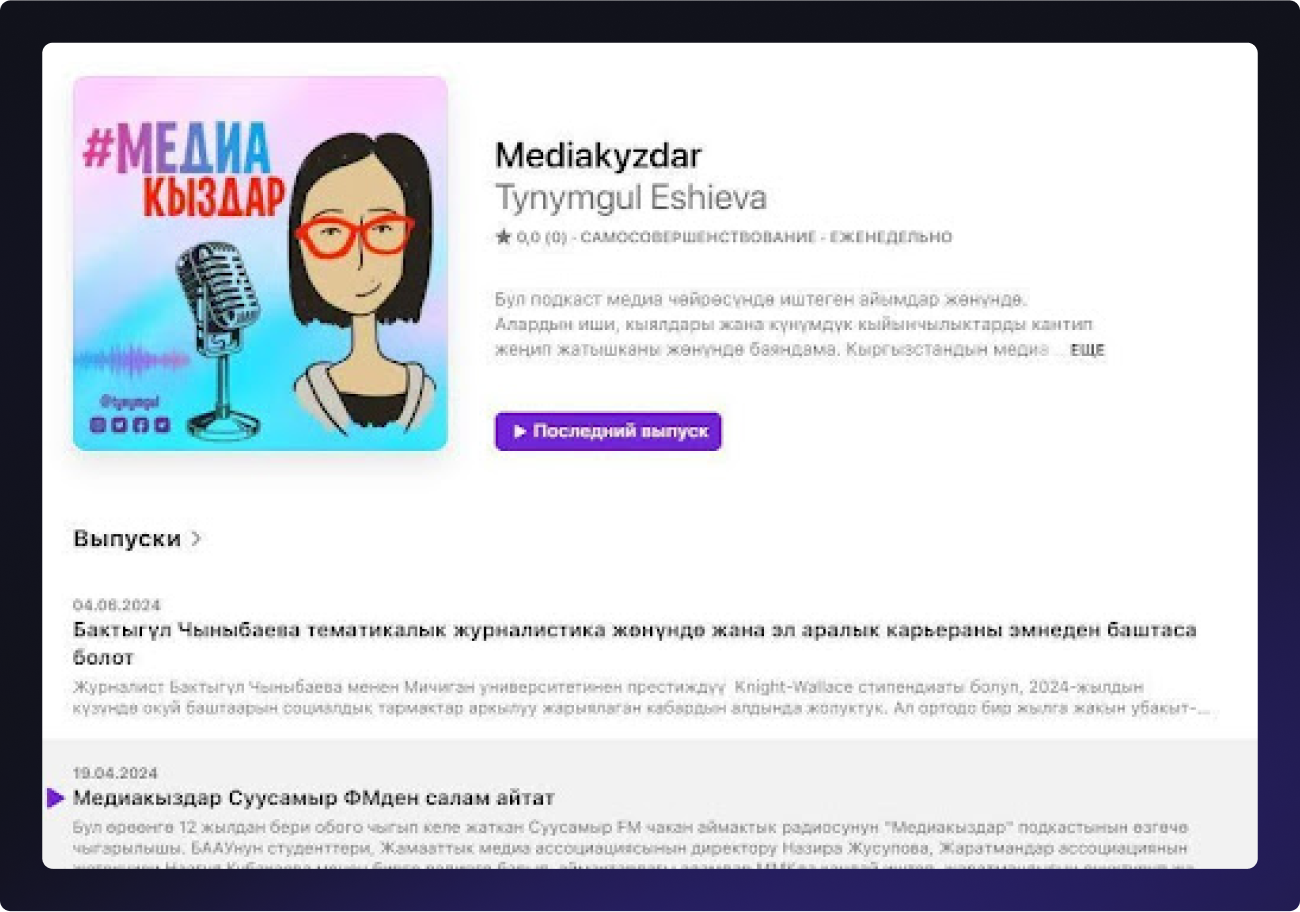
Advertising Formats: How to Get In
Radio in Kyrgyzstan has a clear structure of its own. There’s no need to reinvent the wheel here: tried-and-true formats based on voice and familiar patterns work best. One of the most popular is segment sponsorship. For example, ‘the weather brought to you by…’ sounds natural and sticks easily in listeners’ minds. Jingles remain effective. They catch attention even more than visual banners. Short promo spots lasting 15–30 seconds work especially well during morning and evening hours, when the radio is most often on. But the most impactful format is the live voice of the host — native delivery without loud slogans, as if it’s a personal recommendation.
Private stations are more flexible — placements can be adapted by region, time, and language. State-run stations are stricter in format but offer guaranteed reach.
Podcasts have a completely different rhythm. Here, ads don’t interrupt, they’re woven into the conversation. Integrations by the host work best when they speak naturally, not just read a script. This can be an intro, a mention mid-episode, or a full collaboration where the brand organically becomes part of the topic. The key is in the delivery. No dry ‘our product is the best’ spiel, but a lively, relatable story. If the host has used the product and speaks honestly, it’s noticeable. If they read it off a sheet, listeners skip ahead.
The most effective formats are those where the brand blends into the conversation. For example, when the host casually says, ‘When I tried this, life got easier.’ It sounds like a simple remark, but it sticks. Especially in Kyrgyzstan, where podcasts aren’t yet overloaded with ads and listeners haven’t grown tired of pushiness.
That’s the main difference. People choose to listen to podcasts. They tune in in the car, on a run, or at home with headphones. It’s a calm, non-aggressive format where nothing fights for attention. And that’s exactly why it works.
Should a Brand Invest in Radio and Podcasts?
If your audience isn’t just TikTok users, but real people who take minibuses in the morning, listen to the radio in their cars in the evening, or turn on a receiver at their summer homes, then yes, radio is worth trying.
This isn’t outdated media; it’s a practical tool, especially outside major cities. Radio helps build brand awareness, fosters trust, and creates a sense of presence. In cities, it serves as background support. In regions, it’s often the main channel, especially if your product lives offline: at pharmacies, markets, hardware stores, or medical centers.
Podcasts are a different format. Here, it’s not about flashing by, but being truly heard. Advertising in podcasts isn’t about packaging or promotions. It’s about joining the conversation. If a brand knows how to speak honestly without pushing, it earns not just attention but trust. This format works particularly well for education, culture, social initiatives, and personal stories.
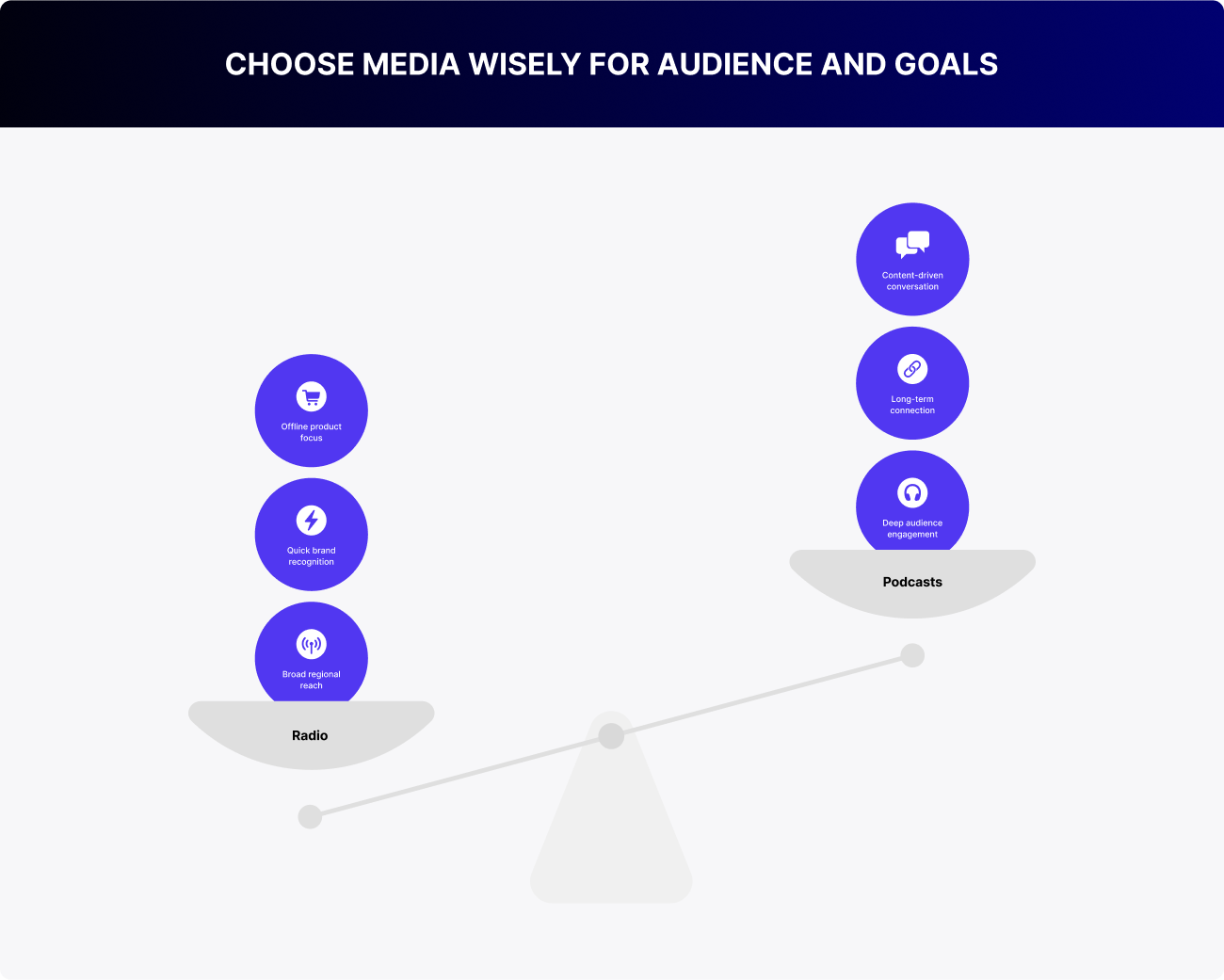
If the goal is quick regional reach, radio will deliver. If it’s about staying top of mind and building long-term connection, podcasts are the way to go. And if both matter, a combination works best. The key is not to try speaking the same way everywhere.
RMAA agency helps international brands enter the Kyrgyzstan and CIS markets. We understand the media landscape, speak the audience’s language, and know where advertising really works, whether it’s broadcast radio in the Osh region or a podcast listeners want to return to. We handle various tasks, from brand awareness to sales, choosing channels to fit brand goals, and managing projects from strategy to placement.
If you want to explore opportunities, leave a request through the form below.
And to stay updated on how brands enter Central Asia quietly but with precise results, subscribe to our blog.
Join 2,000+
of your Peers!
You will be the first to know about Russian marketing insights, news and updates from our agency. Stay tuned!
Get our latest articles delivered to your email inbox and get our exclusive White Paper
"Digital Marketing in Russia. Finding your customers on the internet"
for FREE!
How does the Media Buying Market in Russia Work?
Navigating the Media Buying System in Russia
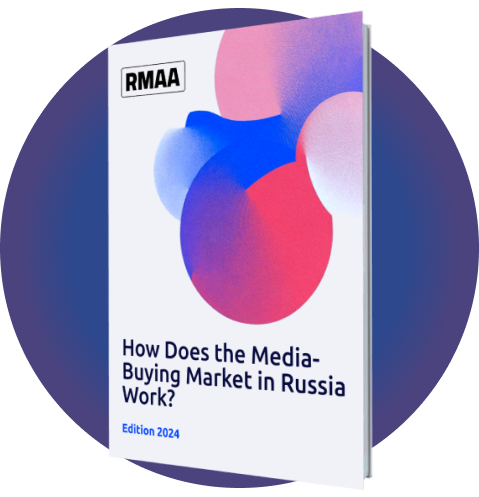
Ready to partner with the specialists in Russian marketing and advertising?
About the Author
A content lead. Natalia runs marketing projects promotion with different digital tools in the Russian-speaking market.
Join 2,000+ of your Peers!
Get our latest articles delivered to your email inbox and get our exclusive White Paper "Digital Marketing in Russia. Finding your customers on the internet" for FREE!
You will be the first to know about Russian marketing insights,
news and updates from our agency.
Stay tuned!
We're updating our website's design step by step, so some pages may look different. Thank you for your understanding.
Got it
